I have noted repeatedly how Canada represents an omen of what could happen to the Australian economy if we continue running an extreme immigration policy.
Canada officially recorded its largest-ever increase in population in 2023, with 1.27 million residents added, 98% of whom came from net overseas migration:
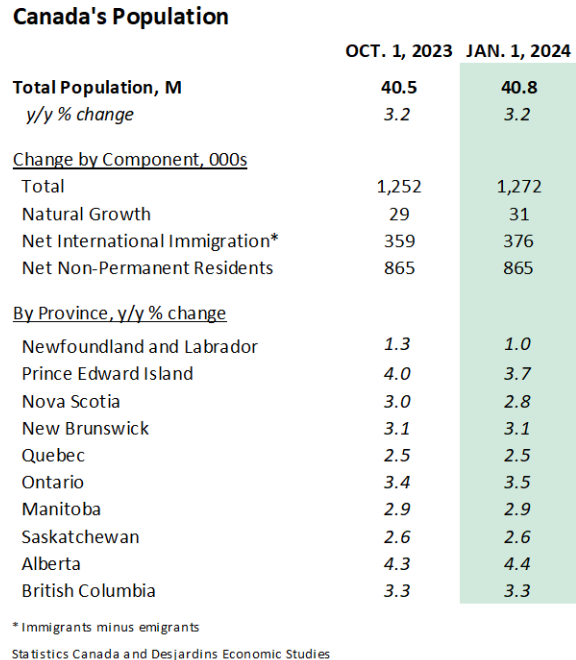
Like Australia, Canada’s extreme immigration has kept the economy from experiencing a technical recession, while per capita growth is sliding backwards:
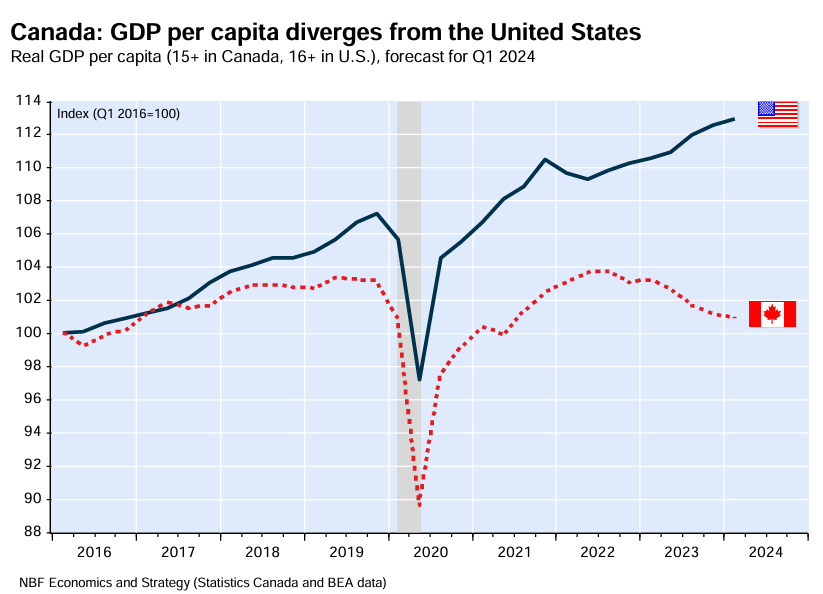
And like Australia, Canada is experiencing its worst ever rental crisis, as population growth swamps housing supply:
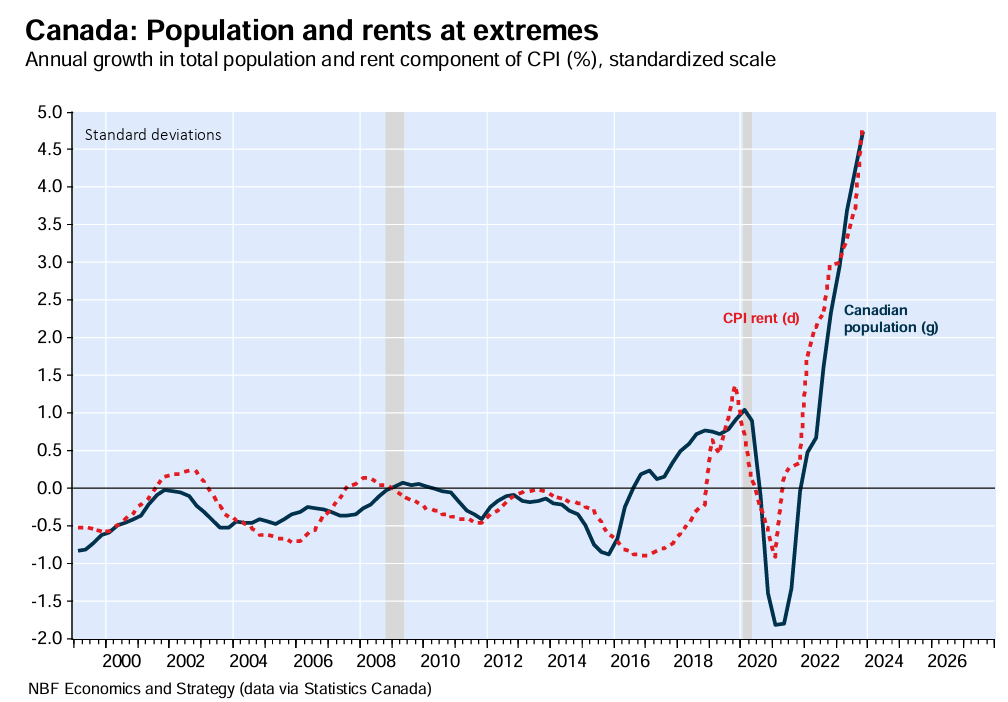
This week’s labour market data from the Australian Bureau of Statistics (ABS) revealed that Australia’s jobs market is beginning to crack amid the deluge of applicants (new migrants) competing for fewer available jobs:

Australia needs to create around 40,000 new jobs every month to keep the unemployment stable, assuming a steady participation rate:

Australia hasn’t been able to create enough jobs, so the unemployment and underemployment rates are rising, and the actual number of hours worked across the economy fell by 0.8% in the year to April.

Now spare a thought for Canada, which requires at least 60,000 jobs to be created every month to stop the unemployment rate from rising.
Canada’s population growth has accelerated even more over the first four months of the year:
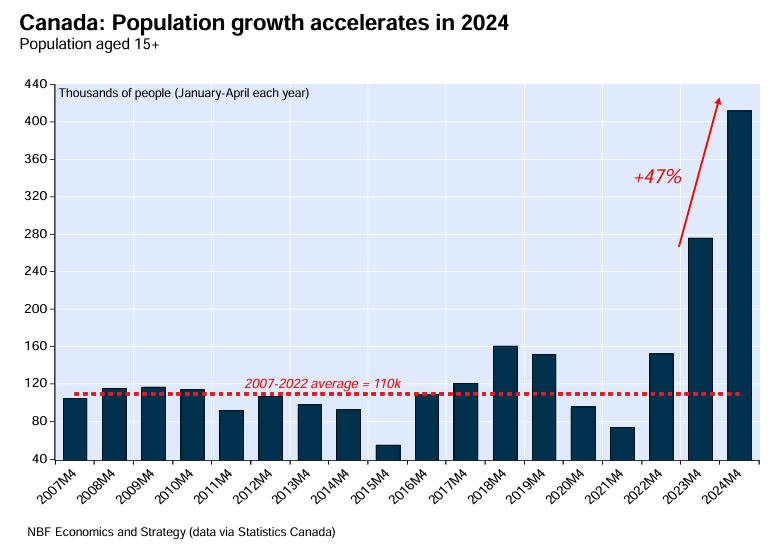
According to the National Bank of Canada:
“The working-age population (aged 15 and over) rose by over 100,000 in April, bringing the total to over 410,000 after 4 months in 2024. As today’s Hot Chart shows, this represents a sharp acceleration (+47%) on the 278,000 increase recorded in the first four months of 2023”.
“With Ottawa having announced its intention to limit immigration from 2025, it would seem that many people have decided to come to Canada earlier”.
“Housing affordability problems could worsen over the next few quarters, as we head for another record year of population growth”.
Canada’s population growth has easily outpaced job creation, as illustrated clearly by BMO:
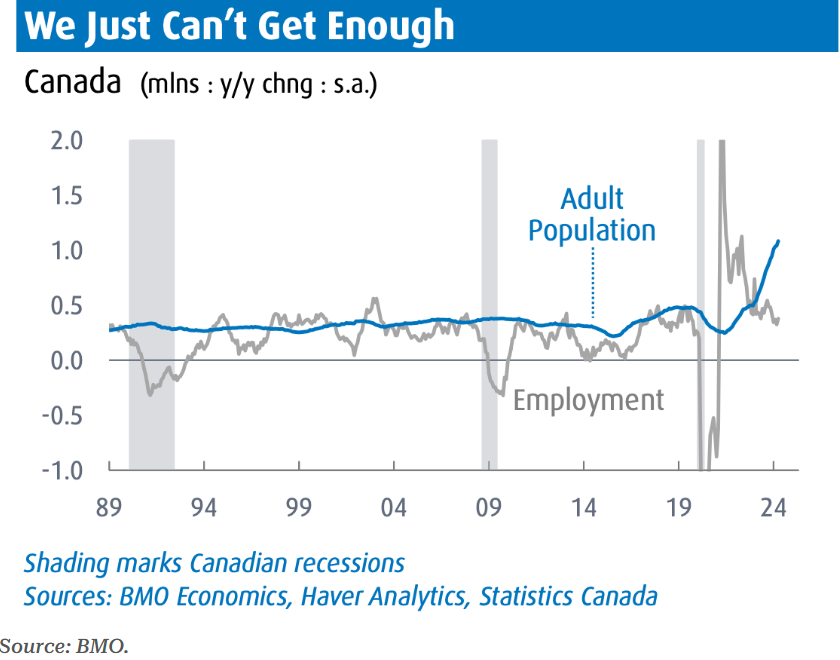
This has driven Canada’s official unemployment rate above 6%:
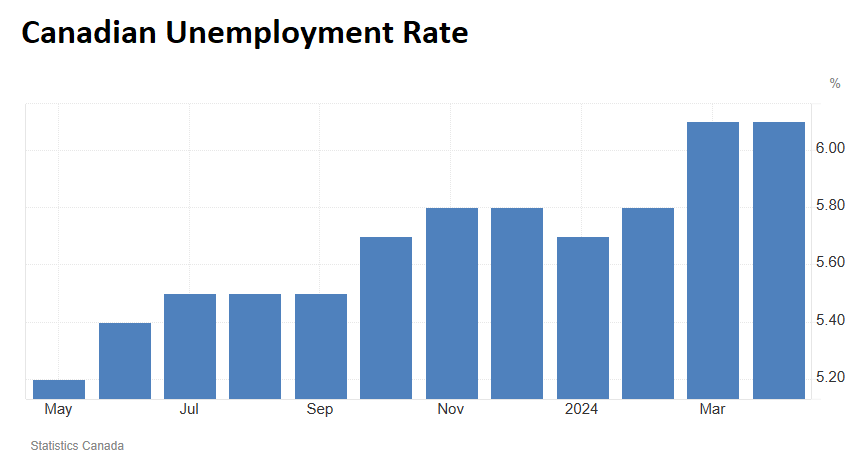
And it is new migrants and young Canadians who cannot find work:

“For the time being, the easing of the labour market is characterized by the difficulty of individuals to enter the Canadian job market, as evidenced by the sharp rise in the unemployment rate for young people and recent immigrants”, National Bank of Canada economists noted.
Finally, the share of companies in Canada experiencing labour shortages plunged drastically, from (48% to 27%, between Q2 2022 and Q1 2024:

Canada is warning of what could happen in Australia if we continue with the same crazy mass migration policy.
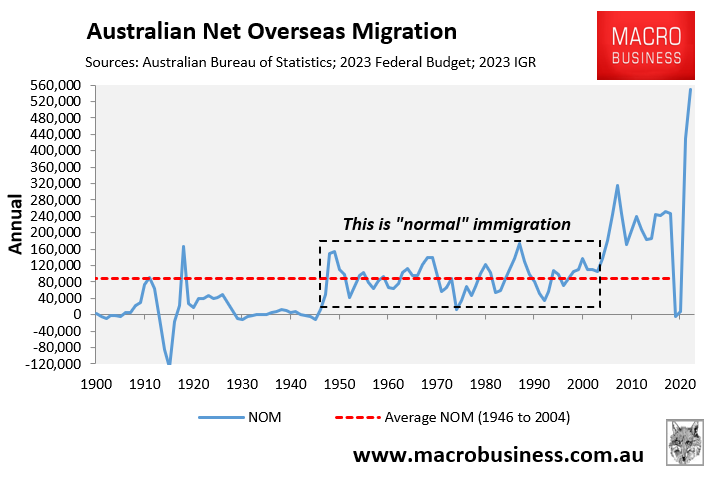
Australia could also be caught in a population trap of declining productivity, never-ending housing shortages, and per capita recessions.

